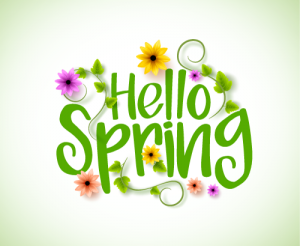 This spring poem activity celebrates that spring has well and truly sprung here in the UK.
This spring poem activity celebrates that spring has well and truly sprung here in the UK.
So, we thought we’d give you another free lesson activity to help you spring into the summer term (spring puns over!).
Overview
This KS2 spring poem English activity encourages pupils to share adjectives and feelings associated with spring and other seasons before writing a poem. You will need to print out copies for small groups of slides 7-10 or use slide 6 to create a spinner for each group (see downloads at the end).
Objectives
- To use adjectives and creative vocabulary to describe the seasons.
- To understand and express how the seasons can link to our emotions.
- To develop written language by creating a poem based on the seasons.
Introduction
- Ask pupils to share with a talking partner how they feel today (slide 3). You could use these emotion cards by the wonderful Bev Evans.
- Take the ‘emotional temperature’ of the class by asking some pairs to share how they feel (or holding up their cards).
- Discuss that how we feel can change based on a range of different factors (e.g. what we are doing and who we are with, what is going on in our lives, how much we slept last night etc).
- Ask the class if they think that the seasons affect how they feel (slide 4). i.e. do they feel any different now it’s spring than they did in winter? Or do they feel better in summer? Explain that you will be exploring this in today’s lesson.
Words to describe the seasons
- Take a look outside of the window and invite pupils to describe the signs of spring that they can see (slide 5). Make a list on the board.
- Split the class into small groups and give out printed copies of the seasons cards or spinner (slides 6-10).
- Give out large sheets of paper and ask groups to create a mind map of adjectives describing the seasons by taking turns to spin the spinner or turn over a card and each time writing an adjective to describe the season e.g. yellow or bright for summer, blooming for spring etc.
- After a few minutes invite groups to stick up their paper and discuss their ideas as a class.
Seasons and feelings
- Give out another sheet of paper to the groups and this time ask them to consider and explain how people might feel during those seasons. For example, they might feel happy in spring because they like seeing the flowers and eating Easter eggs!
- Encourage pupils to think about people other than themselves too. E.g. they might feel happy in winter when they can play in the snow, but who might feel a different way?
- After 5-10 minutes invite pupils to stick up their large sheets and discuss as a class. How do the different seasons make us feel and why? Are there any patterns? Highlight that even if most people feel one way, others can feel differently; there is no right or wrong answer.
Writing a spring poem
- Explain to pupils that you would now like them to create their own spring poem using the work they have done so far.
- Model how to take a season, an emotion word and an adjective to create a sentence. E.g. In spring I feel joyous with a yellow glow.
- Invite pupils in their groups or individually to create a poem about the season they have chosen.
Review and wrap up
- Invite pupils to share their poems and highlight how language can express our feelings.
- As the poems are read, ask the rest of the class to close their eyes and listen to the poem, then share any pictures the poem being read brought to mind for them.
- Ask pupils to share what they have learnt about the seasons and how the seasons can make us feel in today’s lesson. What one word would they use to describe how they feel about spring?
Ideas for extension:
- Pupils could use expanded phrases within the poetry. E.g. The burning heat of summer, melted my heart and with it its worries.
- The poems could be used to create a feelings/emotion display of the seasons and/or spring.
Copyright © Mind Moose 2021






